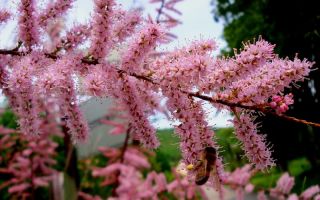Content
The ancient Egyptians revered the tamarisk tree as a sacred tree. He was dedicated to the god Osiris. It was believed that the tree hides the divine body. Tamarisk was treated as a gift from heaven. The plant has been used in folk medicine for centuries. The medicinal properties of tamarix have been established as a result of scientific research. Funds based on it are used for the therapy and prevention of certain pathologies.
What does tamarix look like and where does it grow?
It is believed that the tree gave heavenly manna to the Jews who wandered in the wilderness. Over the course of several months, tamarisk is capable of producing a sweet white resin that resembles juice. This substance solidifies in the form of grains and then is carried away by the wind.
The tree has the following variants of names:
- Abraham;
- God's;
- tamarisk or tamarisk;
- comber;
- beads;
- eshel.
The homeland of the plant is considered the Sahara Desert, which is located in Africa. Tamarisk is an extremely resistant crop to growing conditions. It tolerates both drought and cold. Tamarix lives even on salty soils. The tree can be found on the territory:
- Kazakhstan;
- The Astrakhan region;
- The Mediterranean;
- Australia;
- USA;
- Asia.
Grebenshik belongs to the Tamarisk family. It is a heather shrub or tree. Some varieties are evergreen. Small flowers are arranged in a circle. They have the following color options:
- pink;
- white;
- Violet.
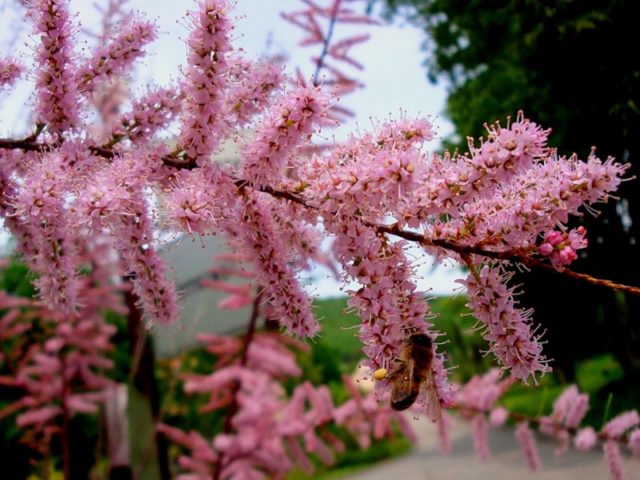
Fruits resemble ribbed capsules, containing many seeds and long hairs gathered in tassels. It is noteworthy that the seeds fly over fairly long distances, which can be hundreds of kilometers.
Beadwork is extremely popular among gardeners due to its external characteristics and unpretentious care. Tamarisk can grow on any soil, however it prefers sandy light soil. The tree propagates both by seeds and by dividing, cuttings.
Chemical composition
Tamarisk is not only of decorative value. The plant is rich in:
- tannins;
- essential oils;
- coloring pigments;
- sucrose;
- aromatic phenolic compounds.
The healing properties of tamarix
The comb is used for the treatment and prevention of various somatic pathologies. This is due to the medicinal properties of tamarisk:
- astringent;
- diuretic;
- anti-inflammatory;
- hemostatic.
Bead is an excellent honey plant. The beekeeping product retains its rich chemical composition and useful qualities. Honey has an interesting taste with a characteristic bitterness.
To preserve all the beneficial properties of the plant, you must follow the rules for collecting raw materials. For example, bark and bare twigs are harvested from March to April. In the cold season, the movement of juices is absent. Flowers, shoots and leaves are plucked during flowering. The fruits are harvested before ripening in the afternoon.
Preparation and application methods
The advantage of using a comb is the possibility of outdoor and indoor use. Infusions, teas and decoctions are recommended to drink to strengthen the immune system, normalize reproductive function, and improve the functioning of the digestive system.
Tamarix-based drugs produce an anti-inflammatory effect, which is manifested in the elimination of pain. Externally, decoctions and infusions are used in the form of rinsing, compresses for gum disease, joint pathologies.
Application in traditional medicine
The raw material of the comb is used for the manufacture of medicinal compositions. The effectiveness of the reception depends on compliance with the recommended proportions.
For diarrhea
Tamarisk helps to normalize the adequate functioning of the digestive system. To stabilize the stool, a decoction is used, including:
- comb bark - 1 tbsp. l .;
- water - 1 tbsp.
The preparation of the potion is simple:
- The bark of the tamarisk is crushed.
- Raw materials are poured with the required amount of water.
- The mixture is boiled over low heat for 15 minutes.
- After the specified time, the agent is filtered off.
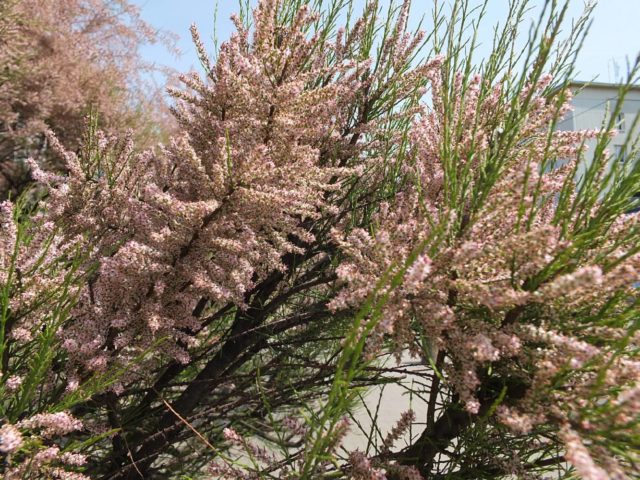
With rheumatism
Beads have anti-inflammatory properties. Raw materials of tamarisk are used for joint diseases. To reduce the severity of signs of rheumatism, an infusion is used, including:
- 2 tbsp. l. tamarix leaf;
- 250 ml boiling water.
The tool is prepared as follows:
- Comber sheets are dried.
- Raw materials are poured with boiling water.
- The drug is insisted for two hours, cooled and filtered.
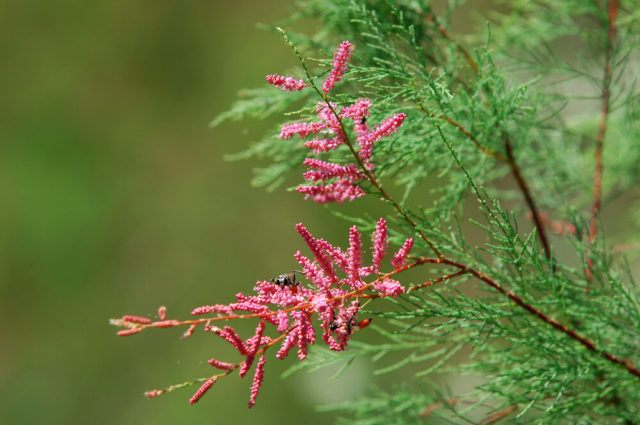
With infertility
Products made on the basis of beads help to restore reproductive function. For this purpose, they drink a decoction containing:
- tamarisk seeds - 1 tsp;
- boiling water - 1 tbsp.
The drug is made in accordance with the instructions:
- Tamarix seeds are ground in a coffee grinder.
- The raw materials are poured with boiling water, the container is placed on low heat and the contents are boiled for 15 minutes.
- Before direct use, the composition is filtered.
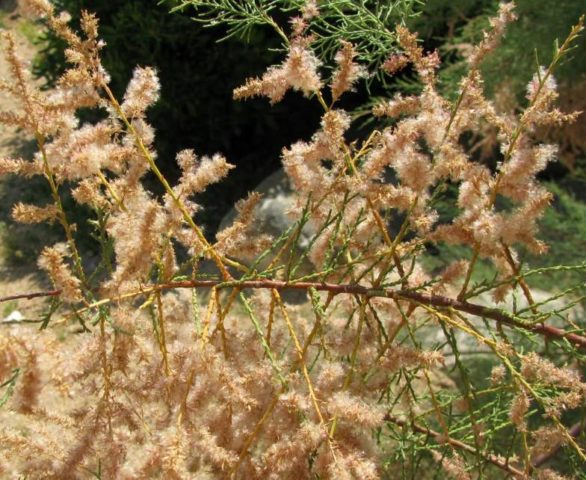
Strengthening immunity
The use of a comb helps to activate the body's defenses. To increase immunity, it is recommended to drink tea, including:
- 1 tbsp. l. tea brewing;
- 0.5 tbsp. l. dry tamarisk flowers;
- 1 tbsp. boiling water.
The tool is prepared as follows:
- Dry raw materials are added to the brew.
- The mixture is poured with boiling water.
- The drug is insisted for 15 minutes.
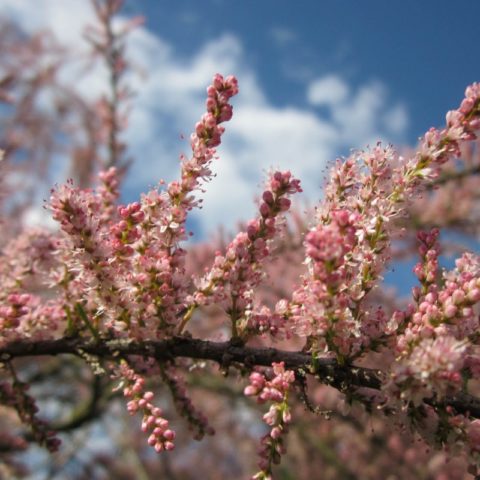
Toothache
In case of emergency, you can resort to rinsing the mouth. The infusion of the comb produces an analgesic effect. The tool is made from the following components:
- dry tamarisk leaves - 3 tbsp. l .;
- boiling water - 250 ml.
The medicine from the comb is made in accordance with the recipe:
- The bead leaves are dried.
- Raw materials are poured with boiling water.
- The product is cooled and filtered for convenience.
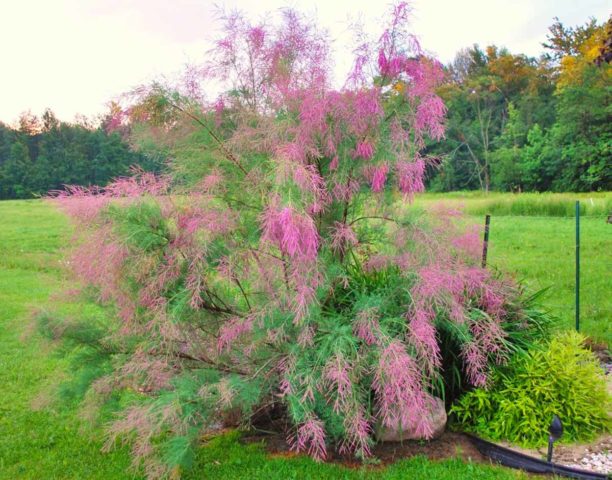
With arthritis
In case of joint diseases, suppuration, a solution is prepared, including:
- chopped bark of beads - 20 g;
- boiling water - 200 ml.
The broth is done in stages:
- Bark or twigs without foliage are poured with boiling water.
- The composition is boiled over low heat for 20 minutes.
- It is advisable to strain the agent before external use.
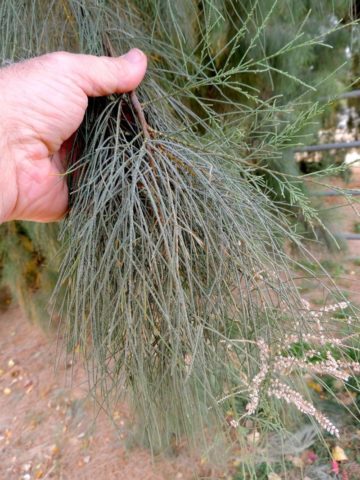
With purulent wounds
Poultices are used to heal wounds and eliminate suppuration. The bead leaves and flowers are thoroughly washed and then poured over with boiling water. They are crumpled a little, then wrapped in a clean bandage, applied to the affected area.
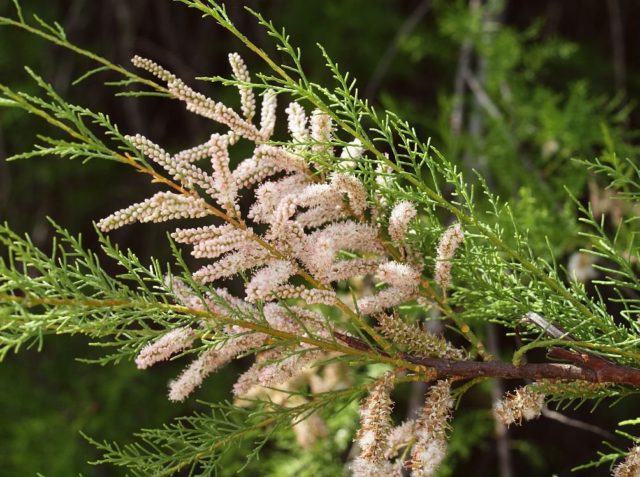
Contraindications
Side effects resulting from the use of beads have not been studied. However, it is not recommended to include tamarisk in the complex therapy during pregnancy or lactation. Contraindications also include hypersensitivity reactions.
Conclusion
The medicinal properties of tamarix are under study. The healing tree has been used for therapeutic and decorative purposes for many years. The flowers, bark, leaves and twigs of the plant contain a whole range of nutrients that help maintain health and wellness. From the raw materials of beads, drugs are made, intended not only for external, but also internal use. Tamarisk-based remedies treat diseases of the reproductive system, digestive system and skin.

